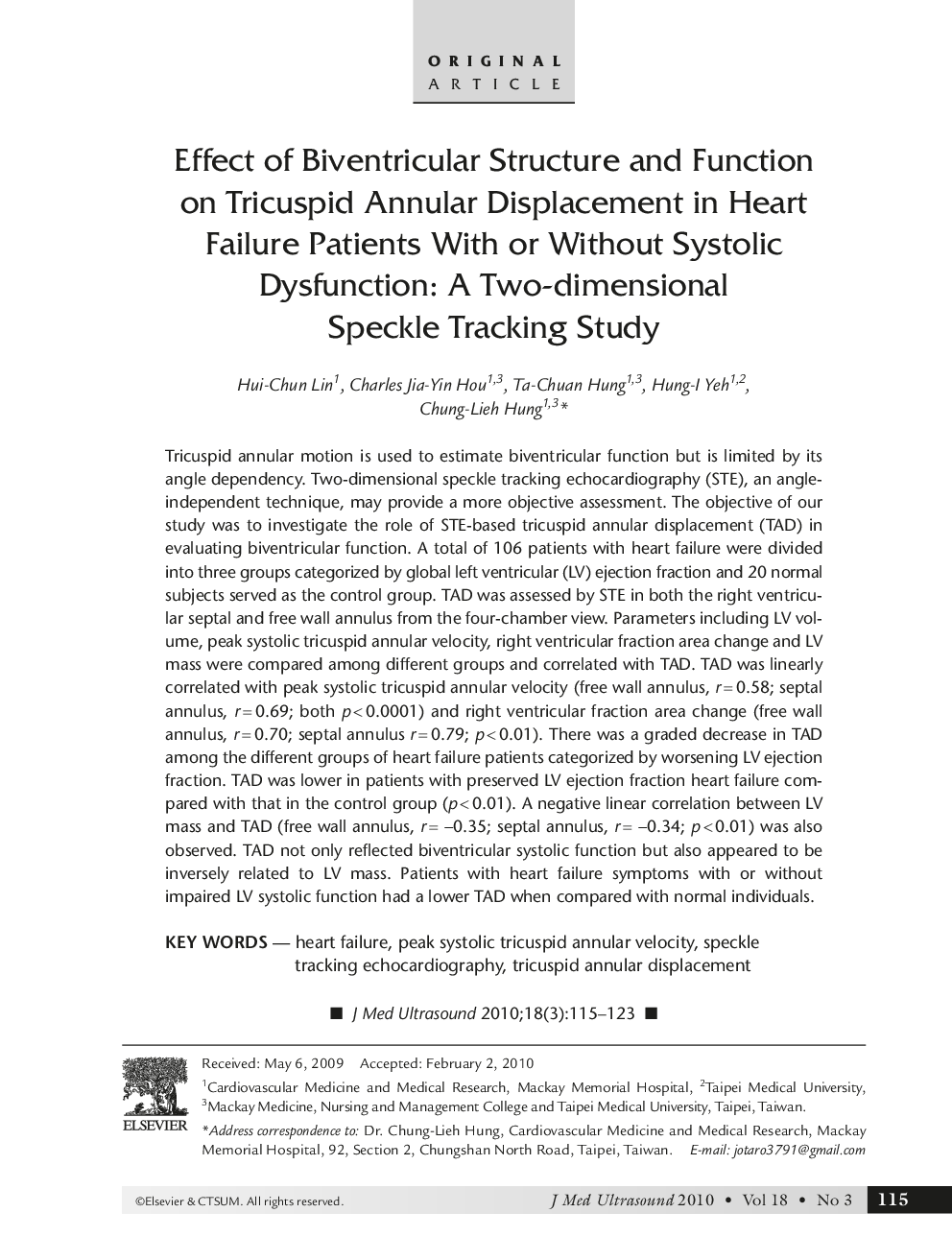| Article ID | Journal | Published Year | Pages | File Type |
|---|---|---|---|---|
| 4233305 | Journal of Medical Ultrasound | 2010 | 9 Pages |
Tricuspid annular motion is used to estimate biventricular function but is limited by its angle dependency. Two-dimensional speckle tracking echocardiography (STE), an angle-independent technique, may provide a more objective assessment. The objective of our study was to investigate the role of STE-based tricuspid annular displacement (TAD) in evaluating biventricular function. A total of 106 patients with heart failure were divided into three groups categorized by global left ventricular (LV) ejection fraction and 20 normal subjects served as the control group. TAD was assessed by STE in both the right ventricular septal and free wall annulus from the four-chamber view. Parameters including LV volume, peak systolic tricuspid annular velocity, right ventricular fraction area change and LV mass were compared among different groups and correlated with TAD. TAD was linearly correlated with peak systolic tricuspid annular velocity (free wall annulus, r = 0.58; septal annulus, r = 0.69; both p < 0.0001) and right ventricular fraction area change (free wall annulus, r = 0.70; septal annulus r = 0.79; p < 0.01). There was a graded decrease in TAD among the different groups of heart failure patients categorized by worsening LV ejection fraction. TAD was lower in patients with preserved LV ejection fraction heart failure compared with that in the control group (p < 0.01). A negative linear correlation between LV mass and TAD (free wall annulus, r = −0.35; septal annulus, r = −0.34; p < 0.01) was also observed. TAD not only reflected biventricular systolic function but also appeared to be inversely related to LV mass. Patients with heart failure symptoms with or without impaired LV systolic function had a lower TAD when compared with normal individuals.
